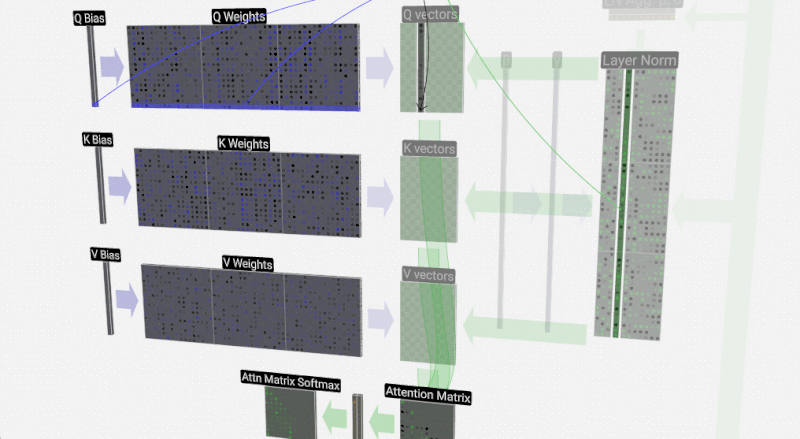For years, Siri has been a familiar voice for Apple users, a reliable assistant for setting timers, checking the weather, and making quick calls. While functional, it has often been critiqued for its rigidity compared to the rapidly evolving capabilities of its competitors. However, the technological landscape is shifting, and all signs point to Apple preparing a monumental overhaul for its digital assistant. This isn’t just an incremental update; it’s a fundamental reimagining of what Siri is and what it can do. Fueled by advancements in large language models (LLMs) and a deep integration with Apple’s powerful silicon, the next generation of Siri is poised to transform from a simple command-and-response tool into a truly proactive, conversational, and context-aware intelligence at the heart of the entire Apple ecosystem. This article provides a comprehensive technical deep dive into the architecture of this new Siri, its profound implications for every Apple device, and the practical applications that will redefine our daily interactions with technology.
Deconstructing the Siri Overhaul: From Commands to Conversation
The rumored transformation of Siri hinges on a radical departure from its current architecture. The original Siri operates on a system of defined intents and domains. When you ask it a question, it categorizes your request, matches it to a pre-programmed capability, and executes a specific action. This is why it excels at structured tasks but falters with ambiguous or multi-step requests. The future, however, is conversational, powered by technologies that Apple has been quietly building for years.
The Foundational Shift to On-Device Large Language Models (LLMs)
The core of the new Siri will be its adoption of Large Language Models, a technology that allows for a much more nuanced and human-like understanding of language. Unlike the current model, an LLM-powered Siri can grasp context, remember previous parts of a conversation, and generate novel responses instead of pulling from a script. The most significant aspect of Apple’s strategy, as indicated by the latest Apple privacy news, is the focus on on-device processing. While competitors rely heavily on the cloud, Apple is leveraging the formidable power of its A-series and M-series chips to run complex AI models directly on your iPhone, iPad, or Mac. This on-device approach is a cornerstone of the company’s privacy policy, ensuring that your personal data and queries remain securely on your device. This commitment to on-device intelligence is a major differentiator and a critical part of the latest iOS security news, as it minimizes the attack surface associated with transmitting sensitive data to remote servers.
Deep Core OS Integration and the Apple Neural Engine
A smarter Siri requires more than just a better brain; it needs deeper hooks into the operating system. The upcoming changes, likely to be a highlight of future iOS updates news, will involve Siri being woven into the very fabric of iOS, iPadOS, watchOS, and visionOS. This isn’t just about launching apps; it’s about controlling granular functions within them. The key enabler for this is the Apple Neural Engine (ANE), a dedicated component of Apple’s silicon designed to accelerate machine learning tasks. With each new generation of chips, the ANE becomes exponentially more powerful, making it possible to perform the billions of calculations per second needed for real-time, on-device AI. This tight integration of hardware and software is central to the latest iPhone news and iPad news, as it unlocks capabilities that are simply not possible on other platforms.
A Unified Assistant: How a Revamped Siri Will Redefine the Apple Ecosystem
The true power of a revamped Siri lies in its ability to operate seamlessly across the entire suite of Apple products, creating a unified and intelligent experience. This overhaul will dissolve the boundaries between devices, making the entire Apple ecosystem news narrative about a single, cohesive digital environment orchestrated by a personal AI.

Proactive Assistance and Multi-Device Context
Imagine starting a research project on your iPad, then putting on your Apple Vision Pro to visualize the data in 3D. A context-aware Siri would understand the continuity of your task, allowing you to say, “Show me the key data points from the document I was just reading on my iPad.” Later, you could ask your HomePod, “Hey Siri, summarize my research findings from this morning,” and get a concise audio brief. This persistent context across devices is the holy grail of personal computing. This will be transformative for HomePod news and the smart home, turning it from a collection of connected gadgets into a responsive environment. Similarly, the latest Apple Watch news suggests a future where the watch is not just a notification device but a key interaction point with your personal AI, offering timely suggestions based on your current activity and location, tracked discreetly by an AirTag in your bag, which is a frequent topic in AirTag news.
Deeper App Integration and Complex Workflows
The next-generation Siri will move beyond single-step commands to handle complex, multi-app workflows initiated by a single, natural language request. Consider this real-world scenario: “Hey Siri, find a flight to San Diego for the first week of October, book a mid-range hotel near the Gaslamp Quarter with good reviews, and create a calendar event with the flight details.” Today, this would require you to open at least three different apps. A future Siri could execute this entire sequence by interfacing with the APIs of airline, hotel, and calendar apps, presenting you with options for final confirmation. This level of automation will be a recurring theme in future Apple TV news as well, where you could ask Siri to “find a sci-fi movie starring my favorite actor that’s not on a service I subscribe to, and rent it,” streamlining content discovery and consumption.
Enhanced Control for Accessories
This new intelligence will extend to Apple’s growing lineup of accessories. The latest AirPods news points toward more granular audio control. You might be able to say, “Boost the vocals and lower the bass on this podcast,” or “When I’m on a call, activate noise cancellation but pipe in my own voice so I’m not shouting.” This could also apply to creative tools. An artist using an iPad Pro could ask Siri to “change my Apple Pencil to a 6B pencil tool and switch the color to cerulean blue,” a major development for Apple Pencil news. Looking ahead, this could enable powerful interactions with future devices, with speculative Vision Pro wand news suggesting new physical controllers that Siri could augment with voice commands for unprecedented precision in spatial computing.
Practical Magic: Real-World Scenarios for the Next-Generation Siri
The theoretical advancements are impressive, but their true impact becomes clear when we explore practical, real-world applications. This new Siri will unlock new levels of productivity, creativity, and accessibility across all facets of life.
The Creative and Productivity Powerhouse
For professionals, Siri will become an indispensable productivity partner. A marketing manager could use their iPad and ask, “Summarize my unread emails from the design team, pull the latest engagement metrics from our analytics app, and draft a project update.” For creatives, the possibilities are even more exciting. An interior designer using an Apple Vision Pro could arrange virtual furniture in a real room and ask Siri to “show me this room at sunset” or “apply a minimalist color palette to these walls.” This ties directly into emerging Apple AR news and could even revolutionize personal projects, with users creating a dynamic iPad vision board news feed that Siri curates based on their stated goals and browsing history. This level of interaction could even extend to new input methods, with a future Apple Pencil Vision Pro news update potentially allowing users to sketch in 3D space with voice-assisted commands.

Health, Wellness, and Accessibility
In the realm of personal well-being, a smarter Siri could offer profound benefits. With user permission, it could tap into HealthKit data to provide personalized insights, a major evolution for Apple health news. You could ask, “How has my activity level this week compared to last month?” or “Based on my sleep data, what’s the best time for me to work out today?” For accessibility, the impact is even more critical. Users with mobility or vision impairments could navigate complex applications and websites entirely through conversational voice commands, making technology more accessible to everyone.
An AI-Driven iPod Revival?
While it may seem like a nostalgic dream, a highly intelligent, conversational AI could even spark an iPod revival news cycle, albeit in a modern form. Imagine an AI-powered music experience so personal and intuitive that it justifies a dedicated device or a radically new software interface. The latest iPod news may be sparse, but a future Siri could act as the ultimate DJ, curating playlists based on your mood, location, and listening history with uncanny accuracy. This could breathe new life into concepts from the entire lineage, from the capacity of an iPod Classic news topic to the portability of the iPod Nano news or iPod Shuffle news. A modern iPod Touch news update could see a device focused purely on a voice-driven media experience, a far cry from the simple scroll wheel of the iPod Mini news era, but a spiritual successor nonetheless.
Navigating the New Frontier: Pitfalls and Best Practices
This powerful new era for Siri also introduces new challenges and considerations for Apple, developers, and users alike. Navigating this frontier requires a careful balance of innovation and responsibility.
The Privacy Tightrope
The single greatest challenge is the privacy tightrope. To be truly proactive and personal, Siri needs access to a vast amount of user data, including emails, calendars, location, and health metrics. Apple’s on-device processing strategy is the key to mitigating this, but there will always be a trade-off. Users will need clear, transparent controls over what data Siri can access. This ongoing challenge will continue to be a dominant theme in all Apple privacy news for the foreseeable future.
Best Practices for Developers and Users
For developers, the time to prepare is now. The focus should shift from building siloed apps to creating services with well-defined actions and data structures that a future Siri can easily understand and integrate into complex workflows. For users, the best practice will be to unlearn the habit of using rigid, keyword-based commands. Interacting with the new Siri will be more like talking to a human assistant. Learning to trust the system with more conversational and complex requests will be key to unlocking its full potential. This will also be a key factor in future Apple TV marketing news, as showcasing these natural language capabilities will be crucial for adoption.
Conclusion: A New Era of Interaction
The impending overhaul of Siri represents far more than a simple product update; it signals a fundamental shift in how we interact with our technology. By moving from a reactive command-based system to a proactive, conversational AI powered by on-device LLMs, Apple is laying the groundwork for a more intelligent, personal, and seamlessly integrated digital future. This new Siri will be the invisible thread that connects every device in the Apple ecosystem, from the iPhone in your pocket and the AirPods Pro news we follow closely, to the HomePod mini on your counter and the immersive world of the Apple Vision Pro. While challenges around privacy and implementation remain, the potential to enhance productivity, creativity, and accessibility is immense. The next chapter for Siri is not just about a smarter assistant; it’s about a smarter world, personalized for you.











